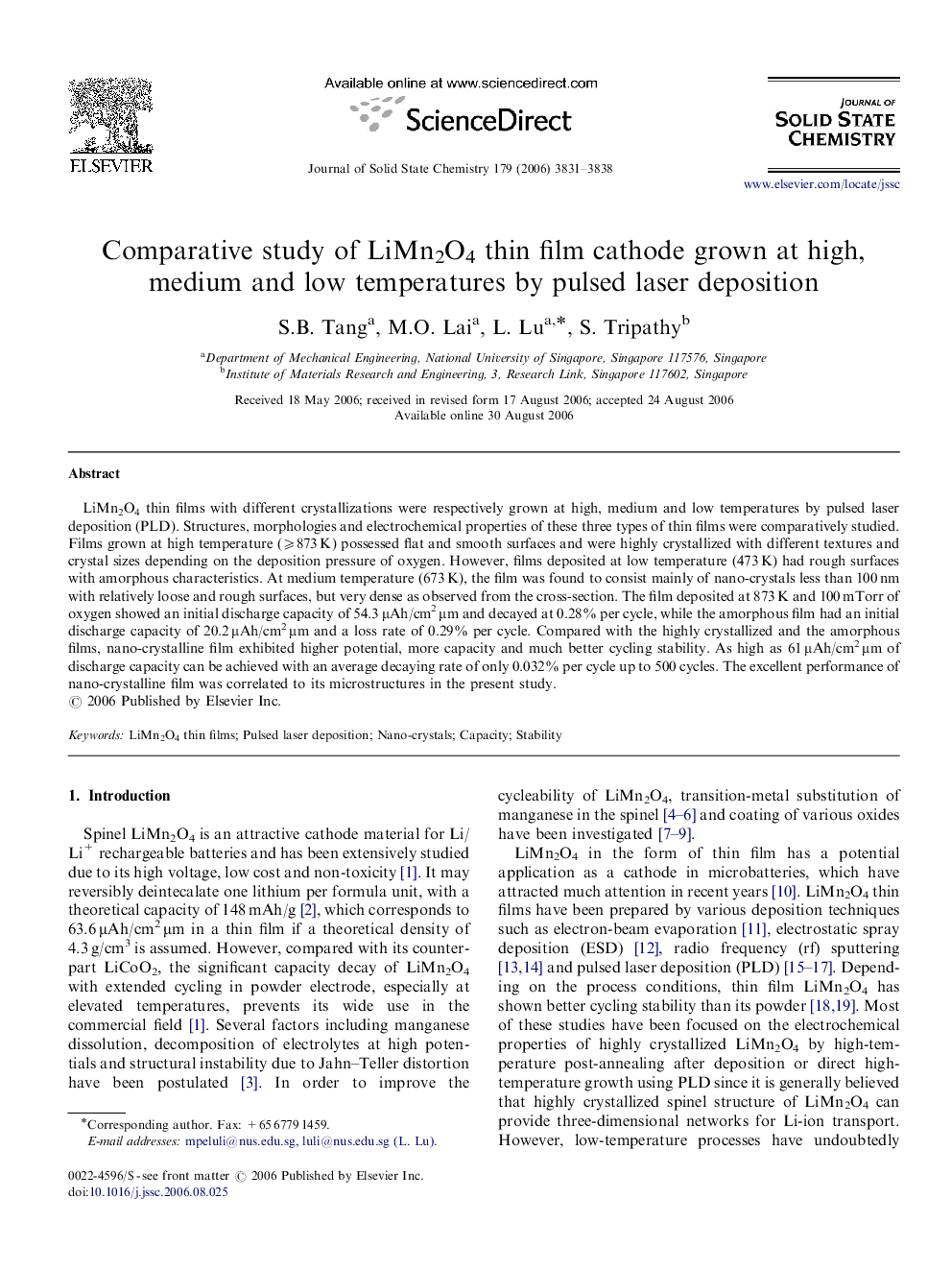| Article ID | Journal | Published Year | Pages | File Type |
|---|---|---|---|---|
| 1331768 | Journal of Solid State Chemistry | 2006 | 8 Pages |
LiMn2O4 thin films with different crystallizations were respectively grown at high, medium and low temperatures by pulsed laser deposition (PLD). Structures, morphologies and electrochemical properties of these three types of thin films were comparatively studied. Films grown at high temperature (⩾873 K) possessed flat and smooth surfaces and were highly crystallized with different textures and crystal sizes depending on the deposition pressure of oxygen. However, films deposited at low temperature (473 K) had rough surfaces with amorphous characteristics. At medium temperature (673 K), the film was found to consist mainly of nano-crystals less than 100 nm with relatively loose and rough surfaces, but very dense as observed from the cross-section. The film deposited at 873 K and 100 mTorr of oxygen showed an initial discharge capacity of 54.3 μAh/cm2 μm and decayed at 0.28% per cycle, while the amorphous film had an initial discharge capacity of 20.2 μAh/cm2 μm and a loss rate of 0.29% per cycle. Compared with the highly crystallized and the amorphous films, nano-crystalline film exhibited higher potential, more capacity and much better cycling stability. As high as 61 μAh/cm2 μm of discharge capacity can be achieved with an average decaying rate of only 0.032% per cycle up to 500 cycles. The excellent performance of nano-crystalline film was correlated to its microstructures in the present study.
Graphical abstractLiMn2O4 thin films with different crystal size were grown at high, medium and low temperatures by PLD. Cyclic voltammograms of LiMn2O4 thin film electrodes deposited at different temperatures show that the excellent performance of nano-crystalline film was correlated to its microstructures.Figure optionsDownload full-size imageDownload as PowerPoint slide
